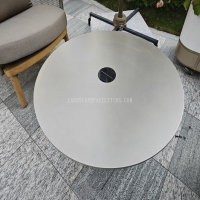Welcome to the website for landscape facilities products and knowledge.
What are the key differences between landscape chairs designed for passive versus dynamic seating?
When selecting landscape chairs for outdoor spaces, understanding the distinction between passive and dynamic seating is crucial. Passive seating chairs are designed for relaxation, featuring sturdy, reclined structures with minimal movement. These chairs prioritize comfort and support, often using plush cushions and fixed angles to encourage prolonged sitting.
In contrast, dynamic seating chairs promote movement and adaptability. They incorporate flexible materials, swivel bases, or rocking mechanisms to engage users actively. These designs are ideal for social settings or workspaces where slight adjustments enhance comfort and posture.
Ergonomics play a vital role in both types. Passive chairs focus on lumbar support, while dynamic chairs emphasize mobility and adaptability. Material choices also differ—passive chairs often use weather-resistant fabrics, whereas dynamic chairs may feature lightweight, durable frames for ease of movement.
Ultimately, the choice depends on the intended use. Passive seating suits tranquil gardens, while dynamic seating excels in interactive environments. Both styles enhance outdoor experiences but cater to distinct needs.
Related search:

Recommendation
Outdoor stainless steel table with solar-powered ambient lighting feature - excellent design.